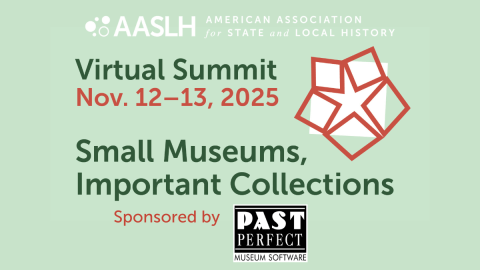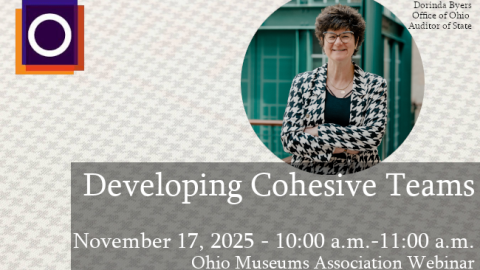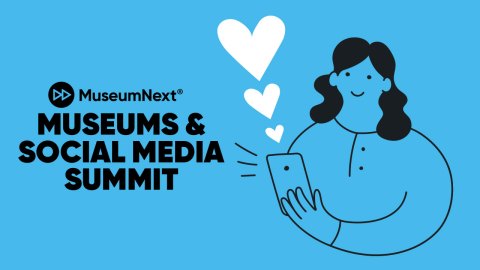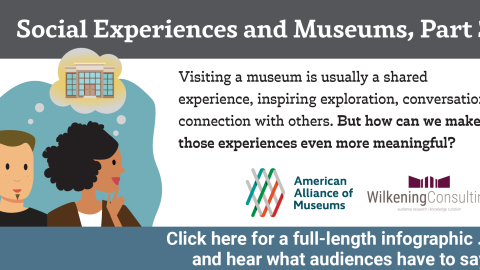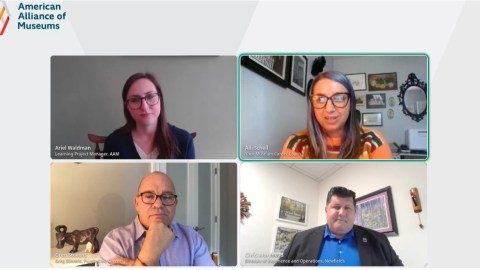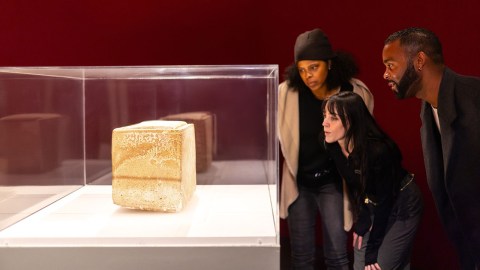
“With our imagination, the future is a place where anything, or one hundred things, or everything, can be different—even things that seem impossible to change today.”
–Dr. Jane McGonigal, futurist and games designer
I want to start the year out with an optimistic look at the pandemic endgame, both to buoy our collective spirits, and to explore the good that can come from even these challenging times. To that end, today I will focus on the seeds of hope we may sow in coming months.
This post presents the second of three new scenarios exploring potential versions of 2022. The first of this set—“A Third Year of Waves”—explores a very plausible future in which the highly transmissible Omicron is the first of several COVID-19 variants to challenge our pandemic response. That story posits potential extended disruptions to travel, education, and employment, and prompts readers to consider how their museums might adapt in the course of the year. I published that scenario on December 14, and am truly sorry that it describes the world we already find ourselves inhabiting come January. Unfortunately, the plausible versions of the next twelve months range from bad (a last bulge of Omicron-driven cases, school closures, travel disruptions, and staff shortages, followed by slow recovery) to worse (recurring waves caused by new COVID variants with footholds in unvaccinated or immunocompromised populations or exhibiting vaccine resistance.)
Despite these sobering forecasts, I want you to remember that the future is a place of hope. While we must acknowledge the possibility of dystopian outcomes, the work of strategic foresight is to help us imagine better futures and to create the world we want to inhabit. Futuring is an act of optimism, and as a futurist, I believe that all of us have the power to act as agents of change. Working within the bounds of the Cone of Plausibility, we identify the best future that we feel is possible. Using the tools of foresight, we plot a path that will take us from the challenges of the present to that preferred future.
With that in mind, here is the second of our three scenarios for the coming year. Working from the least bad way 2022 may play out, I explore the steps society, and museums, might take to lay the foundations for a better, more resilient and more equitable world as we rebound from the pandemic.
–Elizabeth Merritt, VP Strategic Foresight and Founding Director, Center for the Future of Museums, American Alliance of Museums
2022 Scenario Two: The Long-awaited Tail
In the opening months of 2022, the highly contagious Omicron variant swept across the country, with cases rising by orders of magnitude in some areas: Washington, DC, experienced an 800 percent increase in cases. Puerto Rico’s positivity rate jumped from 2 percent to over 30 percent over the course of two weeks. Areas that had been relatively spared from the early waves of the pandemic were particularly hard hit, with the most severe impacts experienced by groups that had been unwilling or unable to be vaccinated. But Omicron, which quickly became the dominant strain of COVID, proved to cause less severe illness overall. Though the sheer number of cases still overwhelmed the medical system during its peak, the availability of effective treatments (remdesivir, monoclonal antibodies, and the new molnupiravir pill) provided significant relief.
Although the virus continued to spawn new variants (reaching Omega, the end of the Greek alphabet by January 2023) none of the successive waves were more deadly, or more vaccine resistant, that their predecessors. Scientists from the Walter Reed Army Institute of Research had started testing a nanoparticle-based “pan-COVID” vaccine in 2021, and by the end of 2022 these tests had progressed to phase 2 and phase three trials, assessing safety and effectiveness. Between the success of the original and new vaccines, and mass exposure resulting from the highly contagious Omicron variant, by the end of the year COVID-19 was well on its way to becoming an annual ordeal, like the flu, still requiring vigilance, but merging into the manageable pantheon of endemic disease.
As the immediate threat of the pandemic receded in the United States, the nation began to assess the long-term impacts of this mass trauma, rebuild our broken systems, and take action to ensure that our country would be better prepared for the next challenge.
Crisis Response
Two of the biggest challenges during the pandemic turned out to be the dissemination of accurate, timely, and trusted communication; and providing equitable access to vital services such as testing and vaccination. To address these challenges the Biden administration proposed a program in the 2023 federal budget that would provide state grants to create and support a robust network of community-based health advocates. In June 2022, the National Council of Nonprofits released an advocacy brief making the case for the integration of nonprofit organizations of all kinds into these networks, with commensurate funding.
Consider: In August 2021, a coalition of organizations launched Communities for Immunity to support the work of museums and libraries in fostering vaccine confidence with funding from the Institute of Museum and Library Services and the Centers for Disease Control and Prevention. How might the museum and library sectors create a lasting network to ensure these organizations can contribute more quickly and effectively to the next national challenge? During the pandemic, some museums made their space available for testing and vaccinations, but each had to work out on their own how to navigate logistic and regulatory barriers and find appropriate partners. How could museums integrate themselves into standing systems for responding to public health crises, locally or nationally? What steps might your museum take, on the local, state, or national level, to connect with health partners in advance, and foster coordinated systems of response?
Long-term Health Challenges
As new cases of COVID-19 declined in the second quarter of 2022, the US began to calculate the long-term toll on mental and physical health. As foreshadowed by a study published in June, 2021, a large percentage of people who contracted COVID were left with long-term symptoms both physical (including fatigue, hypertension, and breathing difficulties), and mental (notably anxiety and depression). It became clear that these challenges would continue to strain the health care system, impair the ability of affected individuals to return to work, and interfere with children’s education for years to come. The cumulative impact of this damage inspired many businesses to revisit their practices, prompting widespread adoption of worker-friendly policies including improved coverage for mental health treatment, workplace programs fostering physical and mental health, and flexible telework policies. Inspired by the success of the federal Families First Coronavirus Response Act (passed in 2020 and extended to September 2021), in 2022 five states began the process of instituting mandates for paid sick leave. In August, the Chronicle of Philanthropy issued a report documenting a four hundred percent increase in local and family foundation funding dedicated to community wellness initiatives.
Consider: copious research has documented how engaging with art and museums contributes to physical and mental health. Some cities have funded programs that empower physicians to prescribe museum visits for their patients, as part of their overall health care regime. How might your museum work with local health care systems (including insurance providers, hospitals, and medical practices) to meet the post-pandemic need for care and healing? How might you track and report on the impact your museum has on the health of visitors and program participants?
Education:
Spring 2022 was still chaotic for both P-12 and higher education. Organizations that had geared up to resume in person classes had to revert to virtual learning, reinstitute distancing, and reinvent their practices to combat burnout and turnover among teachers and administrators. In some districts that resumed in-person classes, many parents chose to keep their children home from school. Parents struggled to accommodate extended home learning and cope with school closures on short notice. Public schools realized they had to take action to recapture the 1.1 million students they lost in the 2020-2021 school year, and stem the unprecedented exodus of teachers driven by burnout and stress. In 2022, sixty-five percent of public school systems reported making long-term investments in the physical and operational infrastructure needed to support remote learning, while over half invested in improvements to their buildings, including amenities such as auditoriums, gyms, and art rooms that had long been underfunded, and the addition of new features such as “sensory rooms” to support student wellbeing. Over three-quarters instituted policies and practices to support teachers’ wellbeing and combat stress, including mini-sabbaticals, cultural enrichment programs, and greater autonomy in instructional design. Despite these actions, the US saw robust growth in alternative learning systems, including homeschooling, micro-schools, learning pods, and long-term online learning supported by schools and other educational organizations.
Consider: How might your museum help schools build back stronger? For example, can you provide on-site enrichment in the schools themselves; ensure that schools, locally or nationally, are making full use of your digital offerings and online resources; and overcome barriers to schools resuming the practice of onsite field trips? How could you serve a growing market for educational services to alternative learning groups? Might your museum consider offering its own alternative educational option by hosting or operating a museum school?
Employment/labor
The labor shortages of 2022 sustained the “Great Resignation” that began in 2021. Workers continued to migrate from precarious, low-wage labor (notably restaurants, service work, and ride-share driving) as well as high stress jobs (particularly P-12 education and health care). As nearly 200 large union contracts expired over the course of 2022, the US was paralyzed by strikes in multiple sectors, including groceries, hospitals, education, and telecommunications, while unionization efforts accelerated among service workers and in higher education. Many non-union workers received a boost as 25 states and 35 cities and counties enacted minimum wage increases on January 1, and by the end of the year 44 cities and counties had raised the minimum wage to $15 an hour for at least some employers. The record breaking surge in new small business formation that began during the pandemic continued through 2022, supported by an influx of capital from stimulus payments and stock market performance, and the desire on the part of many workers to become self-employed.
Consider: as your museum rebounds from the pandemic, how might you compete for labor with stable, desirable jobs? The rise of union organizing campaigns in the nonprofit sector may present museums with a choice of pre-emptively creating better working conditions, or operating with a unionized staff. This might be a good time to reexamine salary structure and benefits, respond to staff input on organizational culture, and address concerns about disparities in pay and power. If your museum will be filling vacant or new positions, you might use this opportunity to advance the DEAI goals of the museum by adjusting position descriptions and requirements to remove unnecessary filters (e.g., regarding education, training, or experience) that might reduce the diversity of the applicant pool.
Travel and tourism
Even as COVID cases soared at the beginning of 2022, travel began to rebound as people exhausted from two years of isolation decided to visit family and reclaim some normalcy in their lives. While the logistics were creaky due to staff shortages across the travel and tourism industry, many destinations reported visitation meeting or exceeding 2019 levels. However, as tourism rebounded, the industry saw shifts in the behaviors and attitudes of travelers. In a national survey of cultural travelers conducted in November, 2022, sixty percent of respondents indicated they would seek out less crowded “hidden gems” in preference to traditionally popular destinations. Seventy percent said they factored risk management, including outdoor venues, social distancing, vaccination requirements and masking, into their leisure decision-making.
Consider: if tourism rebounds before the pandemic is behind us, how might you position your museum as a safe travel destination? Could this be an opportunity to help boost the long-term popularity of your city or region amongst travelers? Conversely, if you have found that lower attendance over the past year has created a better experience for visitors, as well as a better work environment for staff, are there ways you might “right size” your visitation, supported by an appropriate income model?
Some of the data foreshadowing this scenario
(Follow the links embedded in the text above for more news stories that serve as “signals” of this potential future.)
Crisis response: in October, 2020, the Council on Foreign Relations published Task Force Report No. 78, examining lessons from COVID-19 on improving US pandemic preparedness. Concluding that future pandemics are inevitable (and possibly imminent) the Task Force offered a number of recommendations, including creating and funding a national pandemic preparedness strategy. The Task Force emphasized the importance of public trust in pandemic response, including public confidence in accurate, science-based communications. (Which in my mind points to a continued role for museums as trusted sources of information.)
Education: this article from the National Education Association reviews the sobering statistics on teacher burnout, and actions that are likely to help keep teachers in the profession. This brief from the EdResearch for Recovery Project examines the structural supports needed to promote teacher well-being, including prioritizing teacher learning, and giving teachers the autonomy to exercise their professional judgement and creativity in instructional design.

